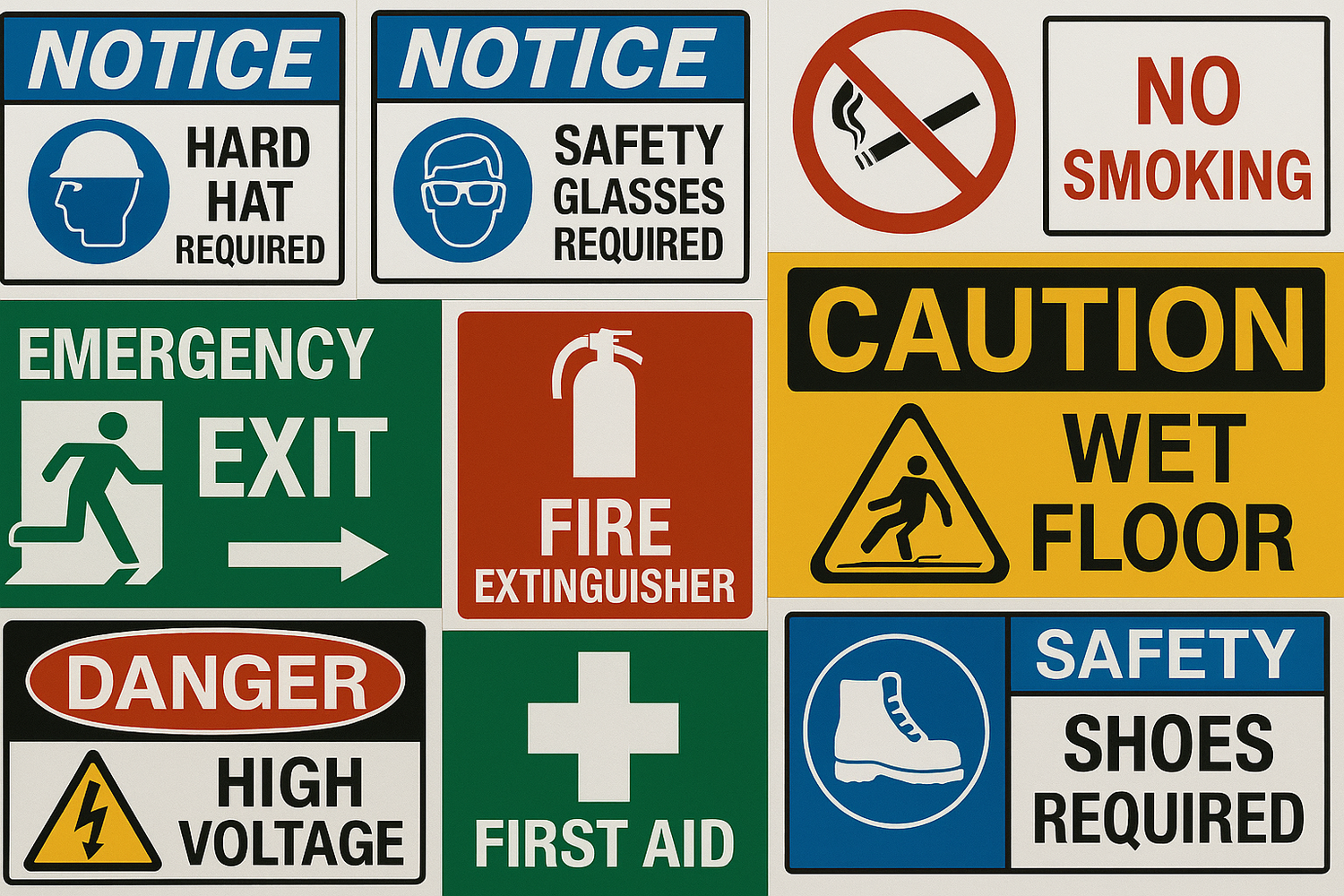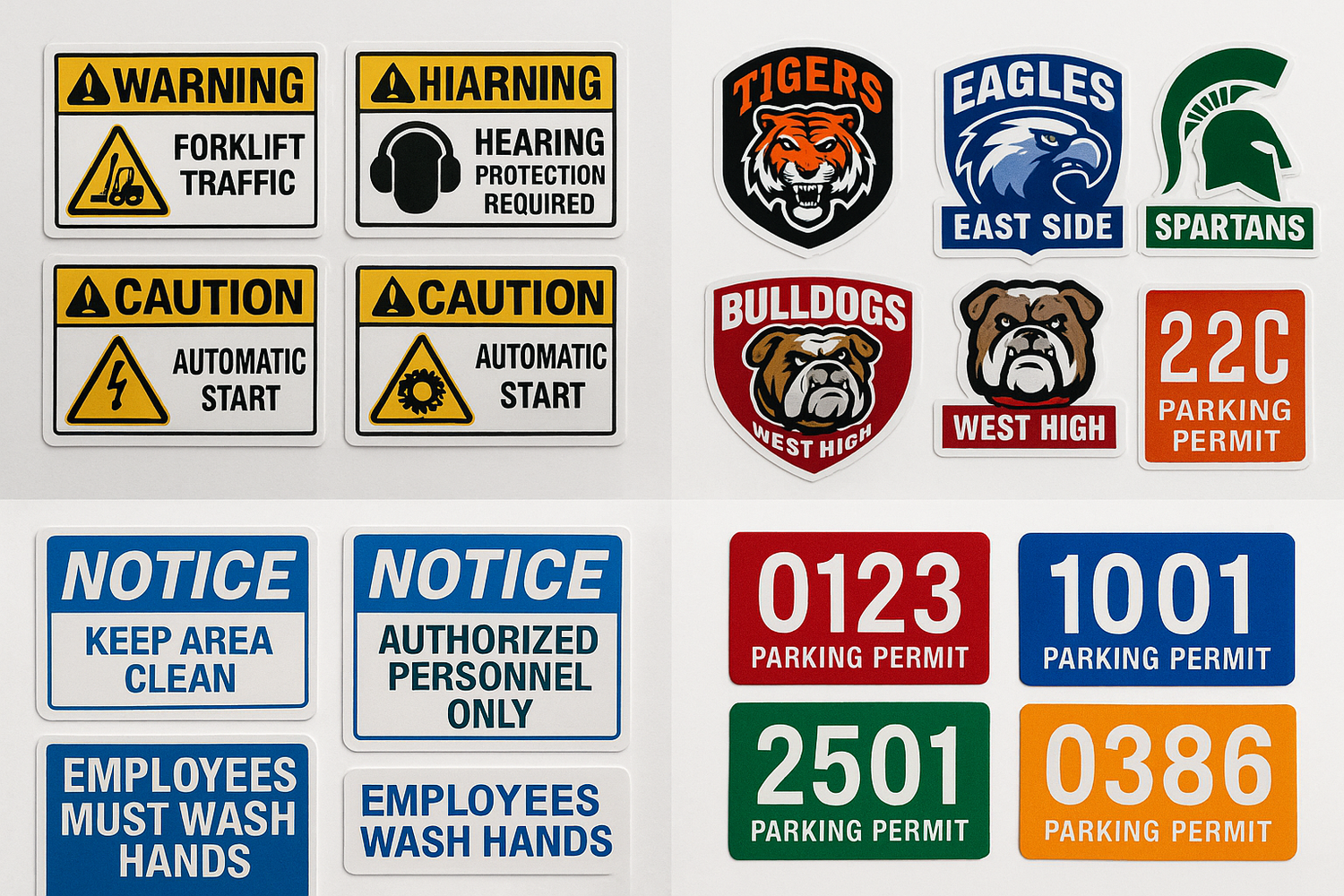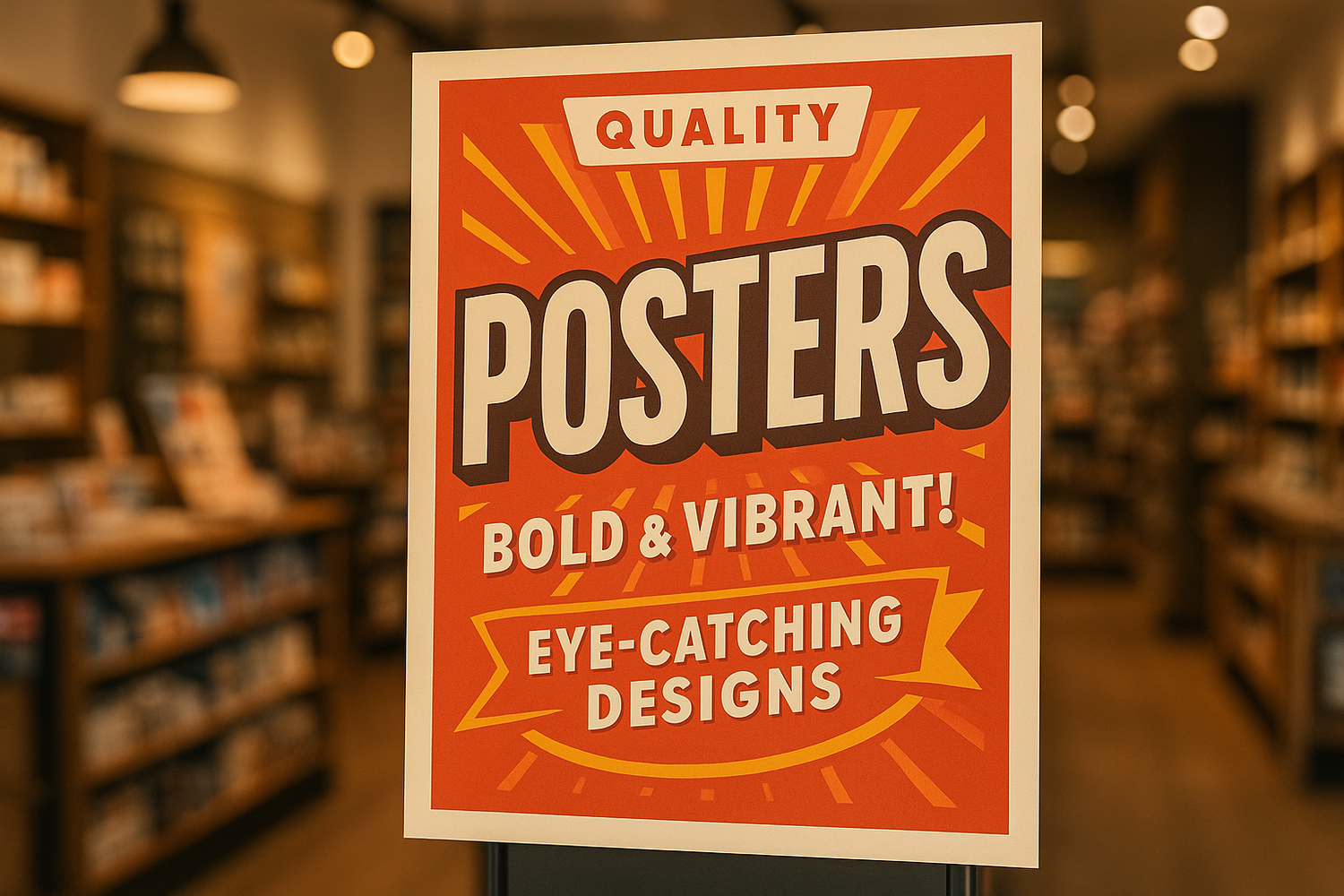In the realm of industrial settings, safety stands as the paramount concern. With heavy machinery, intricate processes, and potential hazards lurking around every corner, maintaining a safe work environment is vital. One often overlooked but crucial element in ensuring worker safety is the strategic use of safety decals on industrial equipment. These unassuming labels serve as powerful visual cues, conveying critical information and cautionary messages that protect workers and prevent accidents. This blog post will explore the significance of safety decals in industrial environments and highlight some essential examples of these decals.
-
 Visual Communication: Safety decals play a pivotal role in visual communication within industrial settings. By using universally understood symbols, colors, and icons, these decals deliver important information quickly and effectively. They serve as a visual language that transcends linguistic barriers, ensuring that crucial safety messages can be understood by all workers, regardless of their native language or literacy level.
Visual Communication: Safety decals play a pivotal role in visual communication within industrial settings. By using universally understood symbols, colors, and icons, these decals deliver important information quickly and effectively. They serve as a visual language that transcends linguistic barriers, ensuring that crucial safety messages can be understood by all workers, regardless of their native language or literacy level. -
 Hazard Identification and Warning: Industrial equipment often poses various risks and hazards that can lead to accidents if not handled properly. Safety decals enable easy identification and warning of potential dangers associated with specific machinery. For example, decals may highlight moving parts, pinch points, electrical hazards, or the need for personal protective equipment (PPE). By prominently displaying such warnings, workers can remain vigilant and take appropriate precautions, minimizing the risk of accidents and injuries.
Hazard Identification and Warning: Industrial equipment often poses various risks and hazards that can lead to accidents if not handled properly. Safety decals enable easy identification and warning of potential dangers associated with specific machinery. For example, decals may highlight moving parts, pinch points, electrical hazards, or the need for personal protective equipment (PPE). By prominently displaying such warnings, workers can remain vigilant and take appropriate precautions, minimizing the risk of accidents and injuries. -
 Safety Procedures and Operating Instructions: Industrial equipment typically requires adherence to specific safety procedures and operating instructions. Safety decals act as handy reminders, providing workers with essential information on proper usage, maintenance, and emergency protocols. These decals may indicate required safety gear, correct operating positions, emergency shutdown procedures, or the location of emergency exits. By providing such guidance at the point of use, safety decals help ensure that workers follow standardized protocols, reducing the chances of accidents caused by human error.
Safety Procedures and Operating Instructions: Industrial equipment typically requires adherence to specific safety procedures and operating instructions. Safety decals act as handy reminders, providing workers with essential information on proper usage, maintenance, and emergency protocols. These decals may indicate required safety gear, correct operating positions, emergency shutdown procedures, or the location of emergency exits. By providing such guidance at the point of use, safety decals help ensure that workers follow standardized protocols, reducing the chances of accidents caused by human error. -
 Equipment Functionality and Control: Safety decals also play a role in enhancing equipment functionality and control. They may feature instructions for controlling speed, pressure, or other critical parameters. For instance, decals on forklifts may highlight load capacity limits, correct stacking methods, or safe driving speeds. By emphasizing these guidelines, safety decals promote proper equipment usage, reducing the risk of damage, breakdowns, or accidents resulting from misuse.
Equipment Functionality and Control: Safety decals also play a role in enhancing equipment functionality and control. They may feature instructions for controlling speed, pressure, or other critical parameters. For instance, decals on forklifts may highlight load capacity limits, correct stacking methods, or safe driving speeds. By emphasizing these guidelines, safety decals promote proper equipment usage, reducing the risk of damage, breakdowns, or accidents resulting from misuse. -
 Maintenance and Inspection: Regular maintenance and inspection are essential for the safe and efficient operation of industrial equipment. Safety decals can aid in this aspect as well. By displaying reminders for maintenance schedules, inspection requirements, or routine checks, these decals help workers stay on top of their equipment upkeep responsibilities. Additionally, decals may provide instructions for lockout-tagout procedures, ensuring the proper isolation of equipment during maintenance activities.
Maintenance and Inspection: Regular maintenance and inspection are essential for the safe and efficient operation of industrial equipment. Safety decals can aid in this aspect as well. By displaying reminders for maintenance schedules, inspection requirements, or routine checks, these decals help workers stay on top of their equipment upkeep responsibilities. Additionally, decals may provide instructions for lockout-tagout procedures, ensuring the proper isolation of equipment during maintenance activities.
Essential Examples of Safety Decals: While safety decals may vary depending on the equipment and industry, here are some common examples:
- Hazard symbols: Alerting workers to potential dangers, such as high voltage, chemicals, or crushing hazards.
- PPE reminders: Indicating the need for safety goggles, helmets, gloves, or other protective gear.
- Emergency procedures: Highlighting emergency shutdown switches, evacuation routes, or assembly points.
- Equipment warnings: Notifying workers of pinch points, hot surfaces, moving parts, or loud noises.
- Load capacity labels: Informing operators of weight limits for cranes, forklifts, or other lifting equipment.
- Control instructions: Guiding operators on speed limits, pressure settings, or control lever positions.
- Maintenance reminders: Displaying maintenance schedules, lubrication points, or filter replacement instructions.
Conclusion: Safety decals serve as indispensable tools for promoting a safe work environment in industrial settings. Through effective visual communication, hazard identification, safety procedures, and equipment control instructions, these unassuming labels contribute to accident prevention and worker protection. By recognizing the significance of safety decals and implementing them consistently, industrial organizations can prioritize the well-being of their workforce while maintaining optimal operational efficiency. Remember, safety should always be a visible priority, and safety decals help make that a reality.






